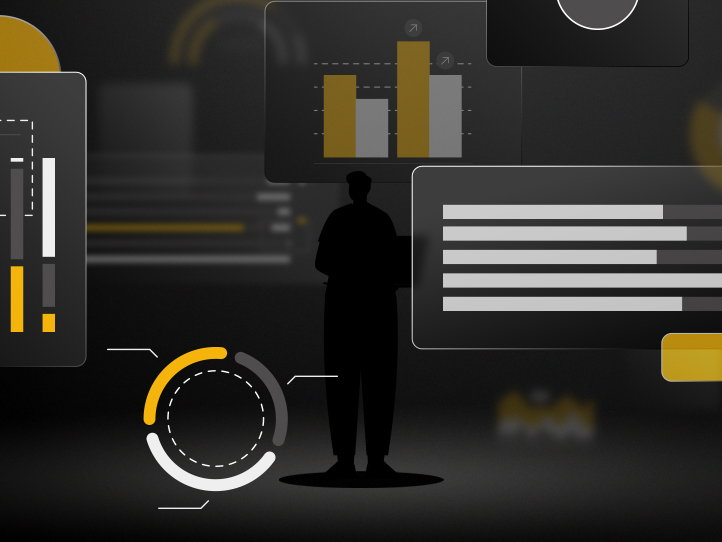Digitising your reports for increased business success

What are the benefits of digital reports?
For most companies, producing reports is a necessary evil.
It can be a dull, daunting and time-consuming task, with hours spent gathering data and creating graphs, formatting, fact-checking, and last-minute late-night copy editing.
Additionally, if you’re printing a physical copy of a report, you face the additional stresses getting your report production and distribution-ready – not to mention the added costs involved.
Once your report is published and posted, it’s a case of hoping your recipients have the time to spare, the attention to give and enough interest to read it.
But publishing your reports isn’t a lost cause. Businesses are increasingly using their reports as tools for lead generation, awareness building and trust amplification. Any report can be digitised: from market briefings, to sustainability and annual reports. But creating a report which stands out requires more than just designing a PDF.
Whether you create a microsite, or a new webpage which hosts your findings, as long as you have a clear strategy and vision you can turn every business report into a marketing tool that promotes your company and engages your audience all year long.
Bring your reports to life
One of the best things about digitising a report is that you can study engagement more closely than with a print document. With a digital report, you can provide a much better user experience than via a printed report or a pdf, allowing for interactivity and responsiveness whilst providing greater clarity and impact.
There are a wide variety of different methods you can use to amplify your report’s underlying data and craft an improved story for your reader. Using interactive graphs or animations, you can provide a wealth of context to each chart, helping your audience to better follow and understand the core messages you want to share.
The global trend of mobile and tablet usage is continuing to rise, and a fully responsive report allows you to make the most of this opportunity. Not only will you reach new audiences across different devices, you’ll also improve the experience of your existing online audience too.
Tracking engagement and interaction is easier, too. The importance of mobile-optimised reporting is only going to continue its trajectory of growth, as ‘digital natives’ age and progress into more high-profile roles and senior appointments worldwide.
Crucially, it’s easy to make amends and additions to your existing online report, without having to reprint or republish. From small things such as copy amendments and imagery updates, to adding live, up-to-date information from an API, changes can be performed quickly and without needing to recall any existing reports. You’ll save time and money, whilst maintaining an audit trail to cover any legal requirements.
Long live digital!
You can think of a digital report a little like a book: each chapter – or section – tells a different part of the ‘story’, while its overall title and theme remains the same. This is one of the key elements which make a digital report so valuable.
Think about a business’ sustainability report, for example. The overall theme is sustainability, and the report may be split into sections such as the corporate mission, sustainability goals, emissions reduction statistics, recycling statistics, employee engagement and waste, etc.
Breaking a report down into these elements allows you to do two things: target additional, more specific audiences, and maximise your report’s longevity, relevance and impact.
By posting regular organic posts on social media and supporting them with paid (targeted) advertising, your report will reach new audiences who may have specific interests in themes contained within your report.
You also boost your opportunity for increased press coverage and ongoing discussion on platforms such as LinkedIn, keeping your report – and your brand – front of mind for your readers and investors.
Digital reporting also offers increased accessibility. Multi-lingual functionality, left-to-right and right-to-left language support and text formatting optionality can all enhance your report’s accessibility – and therefore its reach to a wider audience, for global and regional coverage and relevance.
Localisation can even take this one step further, changing your report’s layout and content based on user behaviour, or third party data like their industry. This is another way to highlight different aspects of your report to drive even more engagement and boost your value to your reader.
Increased coverage and awareness
When a search engine provider assesses your site, they use more than twenty different ranking factors. Their goal is to match people searching online with the content that’s most useful and relevant to them.
High engagement, other websites or ‘authors’ linking to your content, and online conversations about your content and your content’s quality are all among the ranking factors search engines use to determine your value. This is how more people will discover your content.
The more value you have, the more a search engine will increase your visibility to its users. Your ranking will improve across key search terms, in turn driving more traffic to your website and report.
Another key aspect of search engine ranking is your website’s authority. With an increased level of user engagement and a better user experience on your website, you send clear signals to search engines to increase the authority attributed to your page and website.
You can also boost your authority by presenting search engines with a large volume of relevant, high-value content.
Increasing both page and domain authority is an excellent way to cement the trust people place in your website – and your business. Not only this, it can also improve your chances of ranking for a wider range of keywords associated with your site.
Creating a digital report will also allow external parties, such as press or investors, to link directly to your website, going even further to boost the authority of your page and domain in the eyes of a search engine.
Understand your readers
Who are your readers? What do you know about them? Collating as much information about your audience – and desired audience – as you can will help you build a comprehensive report which meets their needs and captures their attention.
You may have different audience groups who will have different relationships to your content. Think about the sustainability report mentioned above: will one audience be focused on a specific section? Do they want more information on your figures or projections? Do they need to follow a certain format?
Unlike a pdf or printed report, tracking can be set up to monitor how people are actually interacting with your reports online, rather than just assuming their continued interest.
By identifying patterns and user behaviours, you’ll be able to understand the user journey through your report. In the long run, this insight will save you time and money, by allowing you to focus on optimising the sections and features that are the most important for engagement.
You can also use tracking to create audiences for your digital marketing. This might be useful should you wish to further publicise a particularly good result, product launch or outcome to people who have already shown an interest in your content.
Build on your success
At Proctor and Stevenson, we know a thing or two about crafting reports, and have been producing extensive, high-quality documents for over 40 years. From digital reports and brochures to microsites, we’ve designed bespoke content solutions for a range of clients, along with robust awareness-building campaigns to drive their audience numbers skywards.
When you digitise your report strategically, you have a marketing tool which promotes your company all year long – and with increased engagement and coverage, shorter production time and ultimately a stronger impact than ever.
When it comes to digital, our in-house team can take care of everything: from back-end development, to front-end and digital design, SEO, AdWords, automation, information architecture and content optimisation. And they’re led by our expert strategists, who’ll work with you to ensure we meet – and exceed – your expectations.
Get in touch, and let’s discuss how to transform your business report into a brand beacon.








